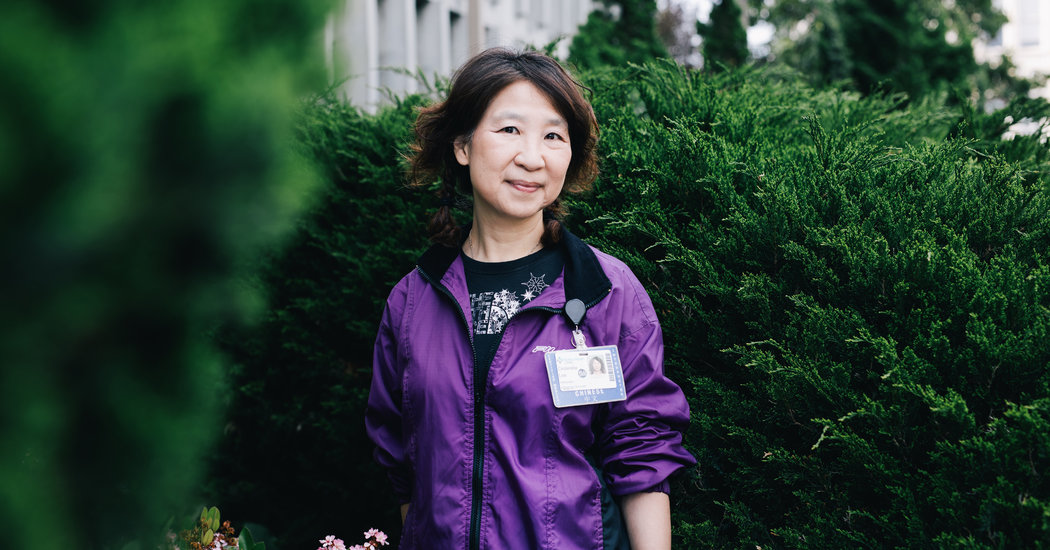34 percent of the coronavirus deaths in New York City, according to data released by the city last week, but just 29 percent of the city’s population. City leaders have suggested that this partly reflected Hispanic overrepresentation among essential workers; a study from the city comptroller found that minorities make up 75 percent of the front-line work force, including grocery clerks and janitors.
Massachusetts has released only limited racial and ethnic data on the virus, but large clusters of infection have been reported in immigrant-heavy Chelsea and in Boston’s predominantly black, Latino and immigrant communities, including in Hyde Park and Mattapan. Roughly 40 percent of Covid-19 inpatients at Massachusetts General Hospital are Hispanic, according to hospital officials, 80 percent of whom are primarily Spanish-speaking.
“This has become a black and brown epidemic across the country,” said Dr. Joseph Betancourt, chief equity and inclusion officer at the hospital. “That’s all the more reason we have to pay attention to language.”
At Cambridge Health Alliance in Massachusetts, nearly half of the 126,000 patients in its primary care system have limited English proficiency. The Alliance has 100 staff interpreters who usually work in its emergency rooms and community clinics. Vonessa Costa, director of multicultural affairs and patient services, said that roughly 99 percent of the interpreting work is now remote, with the interpreting staff fielding upward of 1,300 calls per day.
Those circumstances place tremendous stress on the medical interpreters, Ms. Costa said, especially those who live in Boston’s immigrant communities hard-hit by the outbreak. Last week, she heard from a distraught interpreter who had just spent 45 minutes on the phone helping a young Spanish-speaking woman communicate with hospital staff about two critically ill family members, her partner and her mother.
“There is a trauma in interpreting trauma,” Ms. Costa said. “Quite a few interpreters in our department have family members who have been hospitalized too. They’re shell shocked by the situations they’ve had to interpret and the devastation in their communities.”
Dr. Jorge Rodriguez, a physician at Brigham and Women’s Hospital, said that the coronavirus pandemic is exposing, and exacerbating, a pre-existing condition in the country’s health system: disparities in care for non-English-speaking patients. A 2015 study from the Joint Commission showed that patients with limited English proficiency experienced adverse health outcomes at markedly higher rates than English speakers.
“We knew that limited-proficient-English patients had decreased access to care, more emergency department visits, longer inpatient stays and worse clinical outcomes,” Dr. Rodriguez said. He added that he hoped the pandemic’s disproportionate impact on Hispanic populations would push medical institutions to consider the ways that language barriers affect patient care.
Some medical institutions have already begun to rethink their interpreting services amid the coronavirus outbreak. Dr. Betancourt said that in the last month Mass General has created a registry of front-line staff members who speak multiple languages. The hospital now aims to assign a Spanish-speaking doctor to each medical team whenever possible, so that patients can rely on their physicians to interpret rather than having to use remote services.
Ms. Costa said that Cambridge Health Alliance has identified all patients who require in-person rather than remote interpretation, such as individuals who are hard of hearing and do not use American Sign Language, and has allocated personal protective equipment for their on-site interpreters. The health care provider has begun offering discharge instructions in Arabic, Nepali and other languages, expanding beyond the Spanish, Portuguese and Haitian Creole translations already on offer. And they are considering distributing microphones to patients when necessary to amplify their words for interpreters.
But as Ms. Costa’s organization races to better its interpreting services, she worries about the millions more patients across the country who are non-English-proficient and struggling to access care. “A pandemic is not the time to build working systems,” she said.
[Like the Science Times page on Facebook. | Sign up for the Science Times newsletter.]






